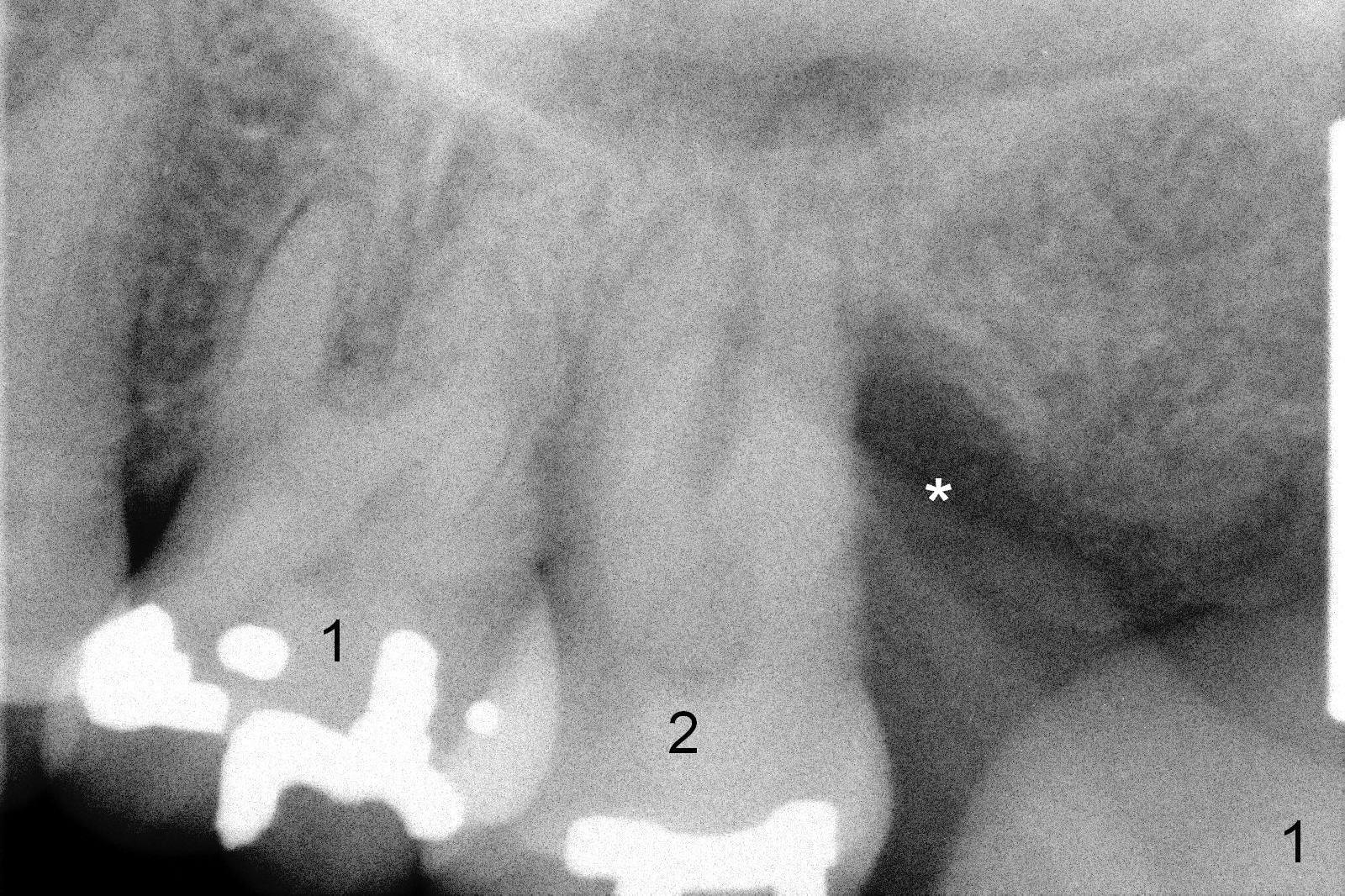
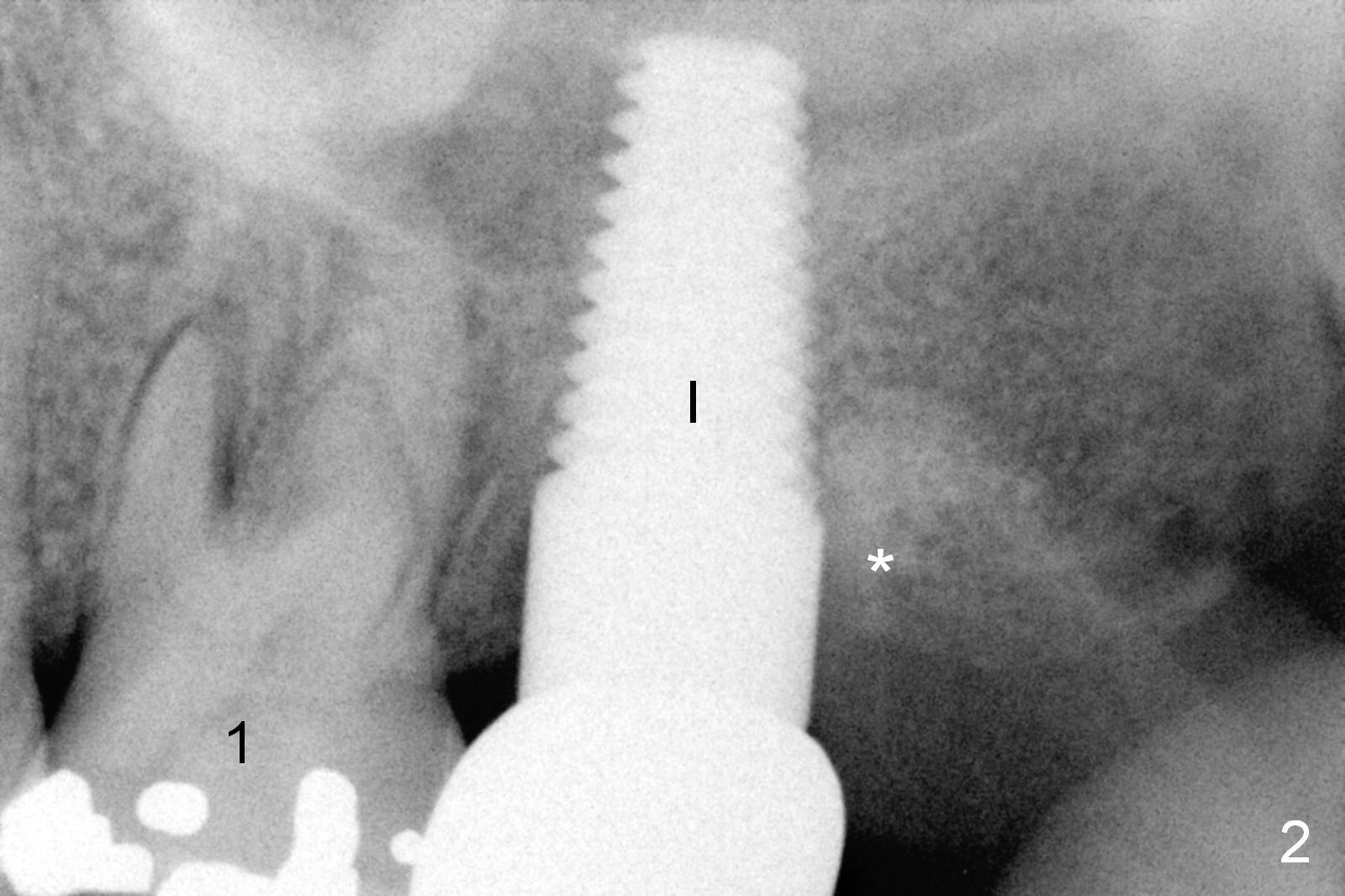
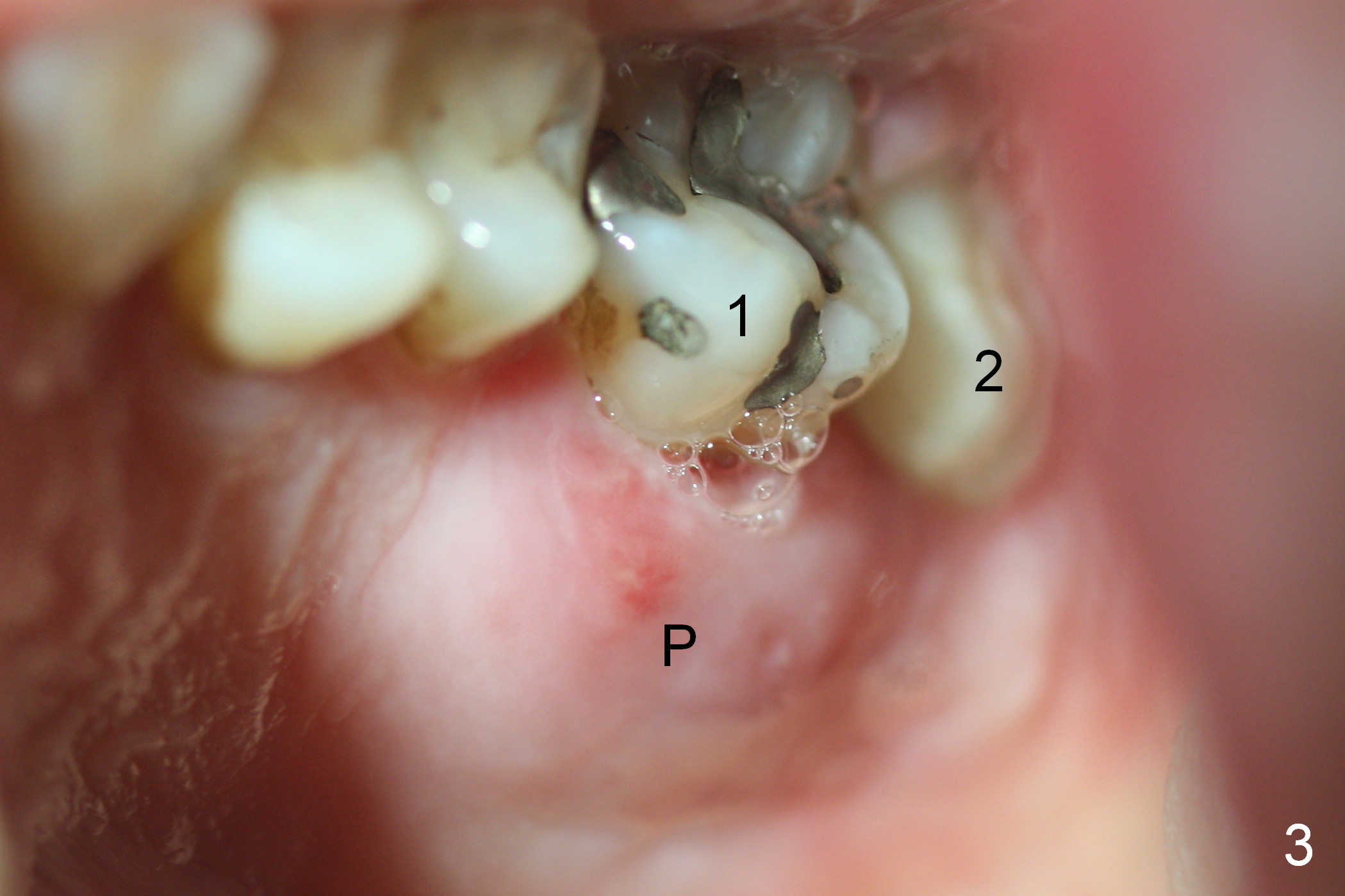
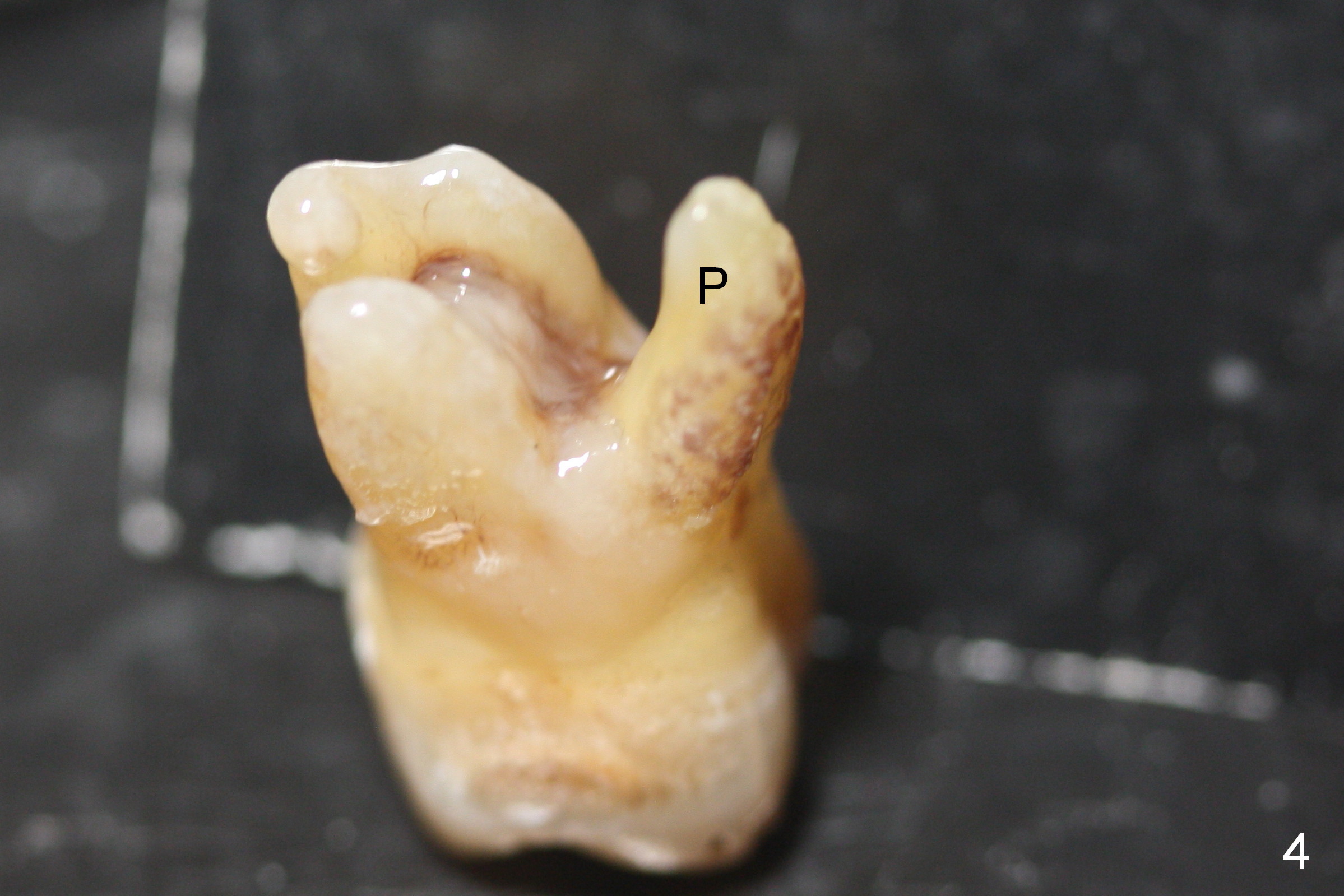
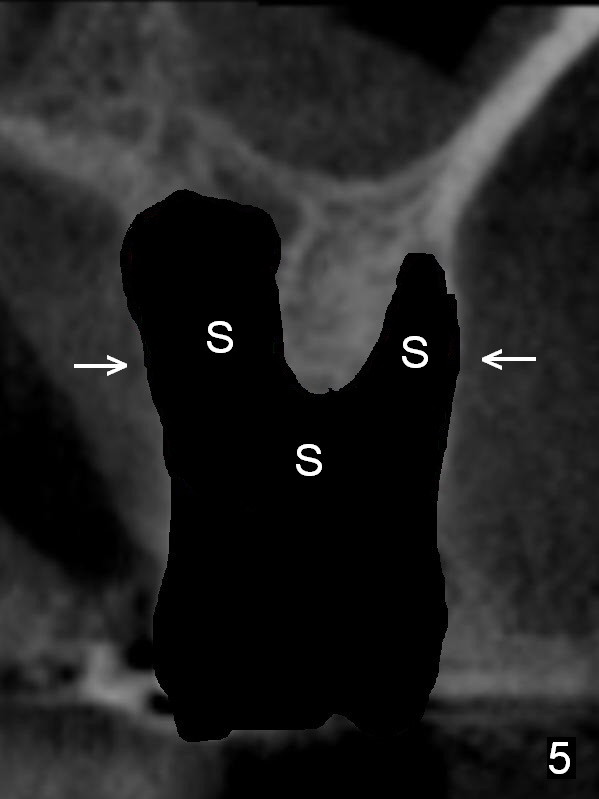
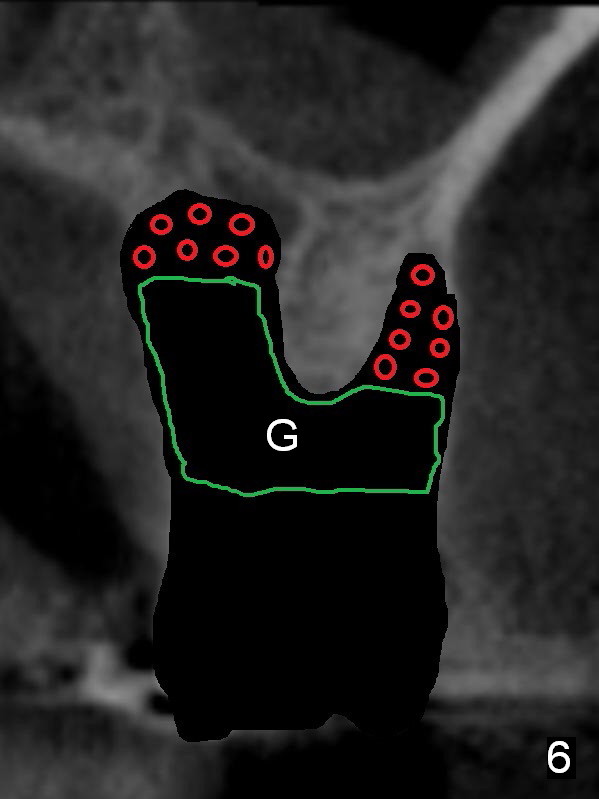
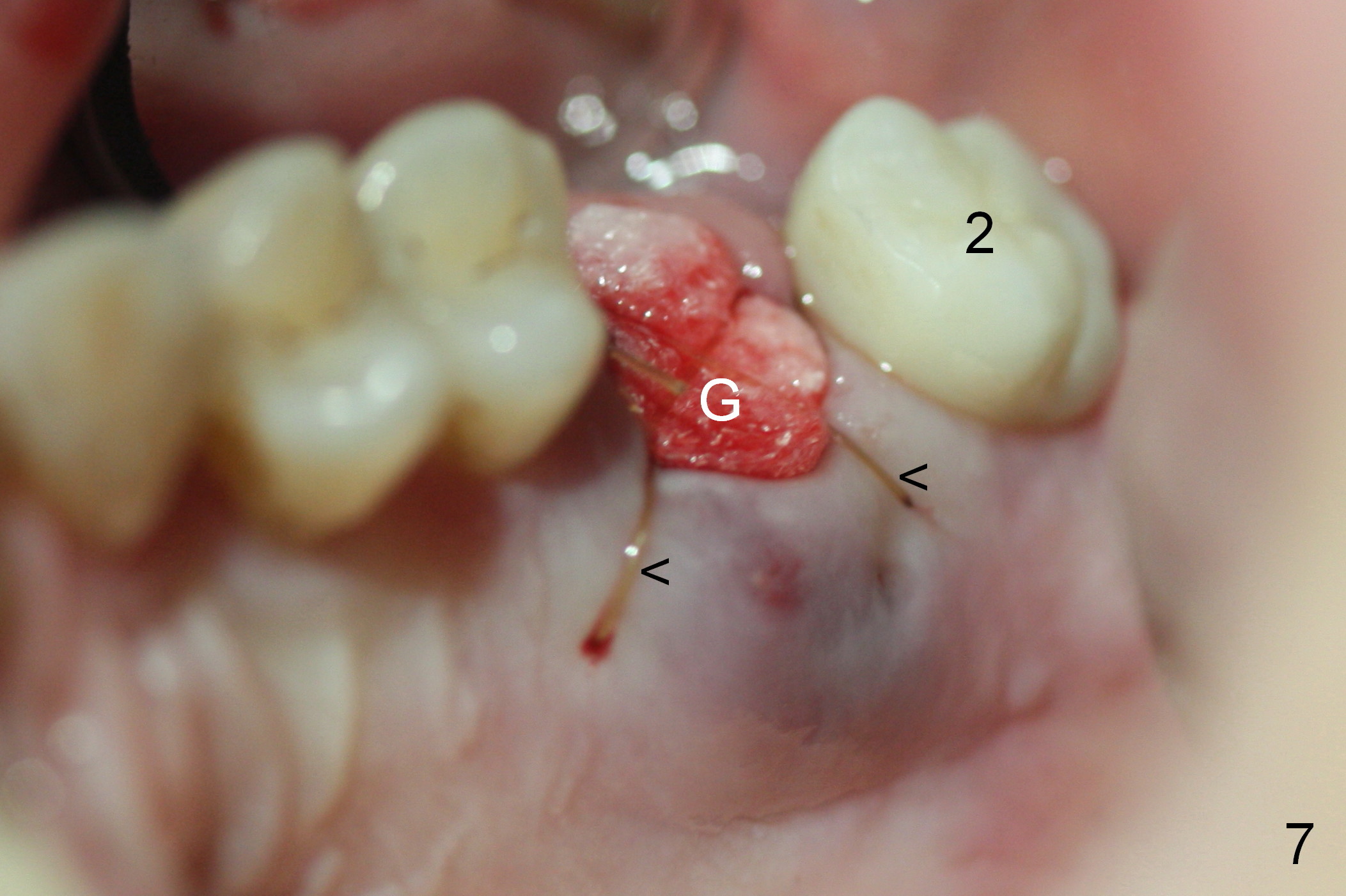


 |
 |
 |
|
 |
 |
 |
 |
 |
 |
||
How to Prevent Bone Loss after Extraction?
There is quick and drastic bone loss when our tooth is gone. The best way for prevention is to have an implant (I) placed immediately after the tooth is taken out (from Fig.1 to 2).
For many reasons, the so called immediate implant is not possible to be done. For example, severe infection happens in the 1st molar (Fig.3 palatal side of the tooth (P)). When the infected tooth is out (Fig.4), there are large empty spaces inside the tooth socket (Fig.5 section of the socket, S). The outside bone is thin and has tendency to shrink after extraction (arrows). A 2nd best way to prevent the shrinkage (bone loss) is to place bone powder (Fig.6 red circles) inside the sockets and place a special gauze (G) at the opening of the socket. The latter keeps the bone powder from falling out of the socket and stops bleeding (Fig.7). In fact the special gauze also has bone powder inside. Stitches are used to hold the gauze in place (Fig.7 <).
Nine days later, the infection is gone (Fig.8 P), while the socket opening becomes smaller around the special gauze (Fig.9 G). Everything feels and looks great. A couple months later, an implant is placed at the 1st molar area to prevent further bone loss.
In fact there is bone loss next to the 2nd molar before extraction (Fig.1 *). When the tooth is out and the immediate implant is in, bone powder is also placed so that when the implant heals, new bone grows back (Fig.2 *).
In brief, when our tooth is out, an immediate implant should be placed with bone powder. If it is not possible, at least bone powder should be placed.
Return to
Implant
Xin Wei, DDS, PhD, MS 1st edition 07/04/2015, last revision 07/04/2015